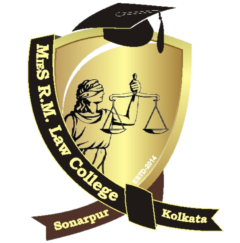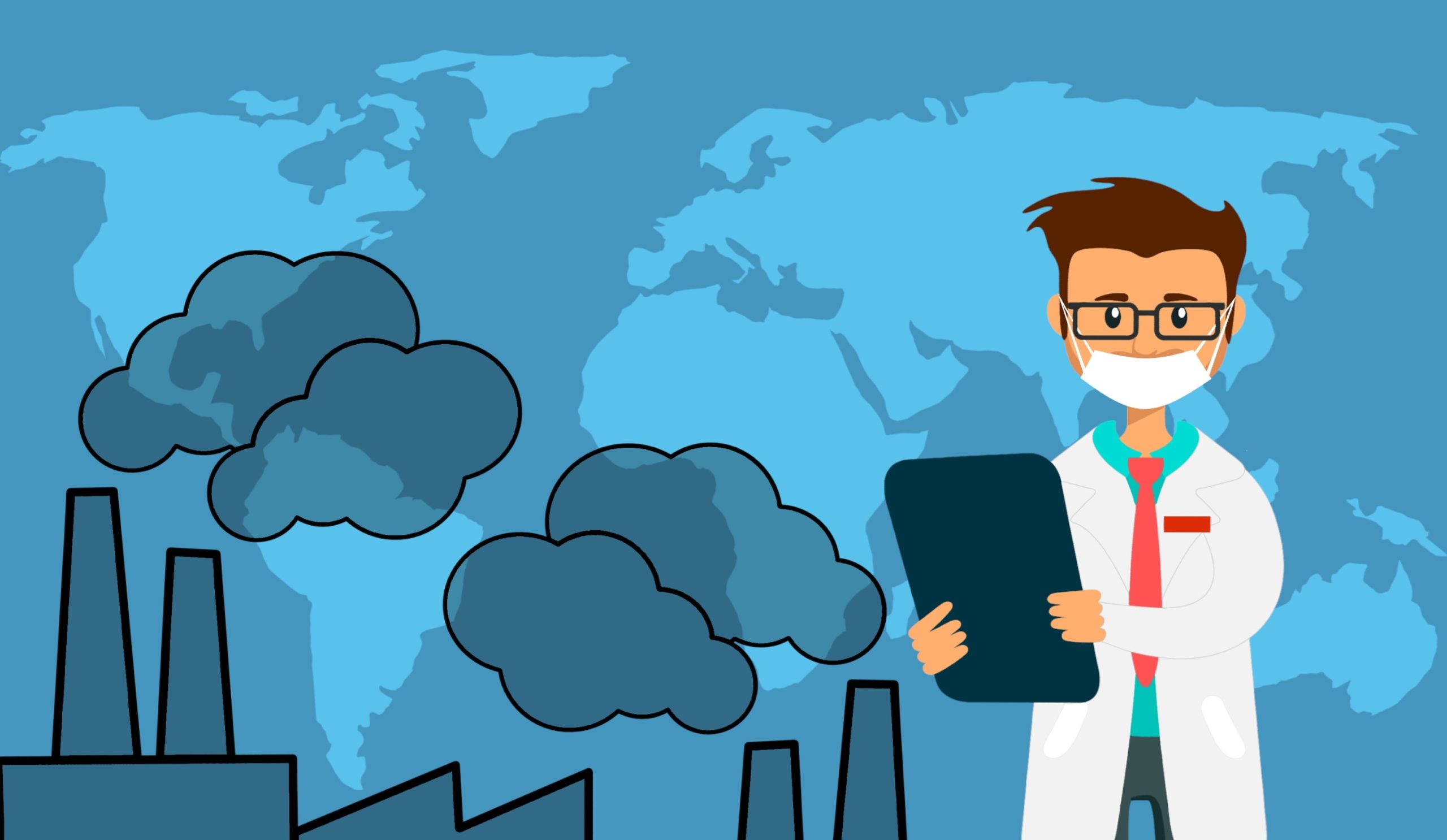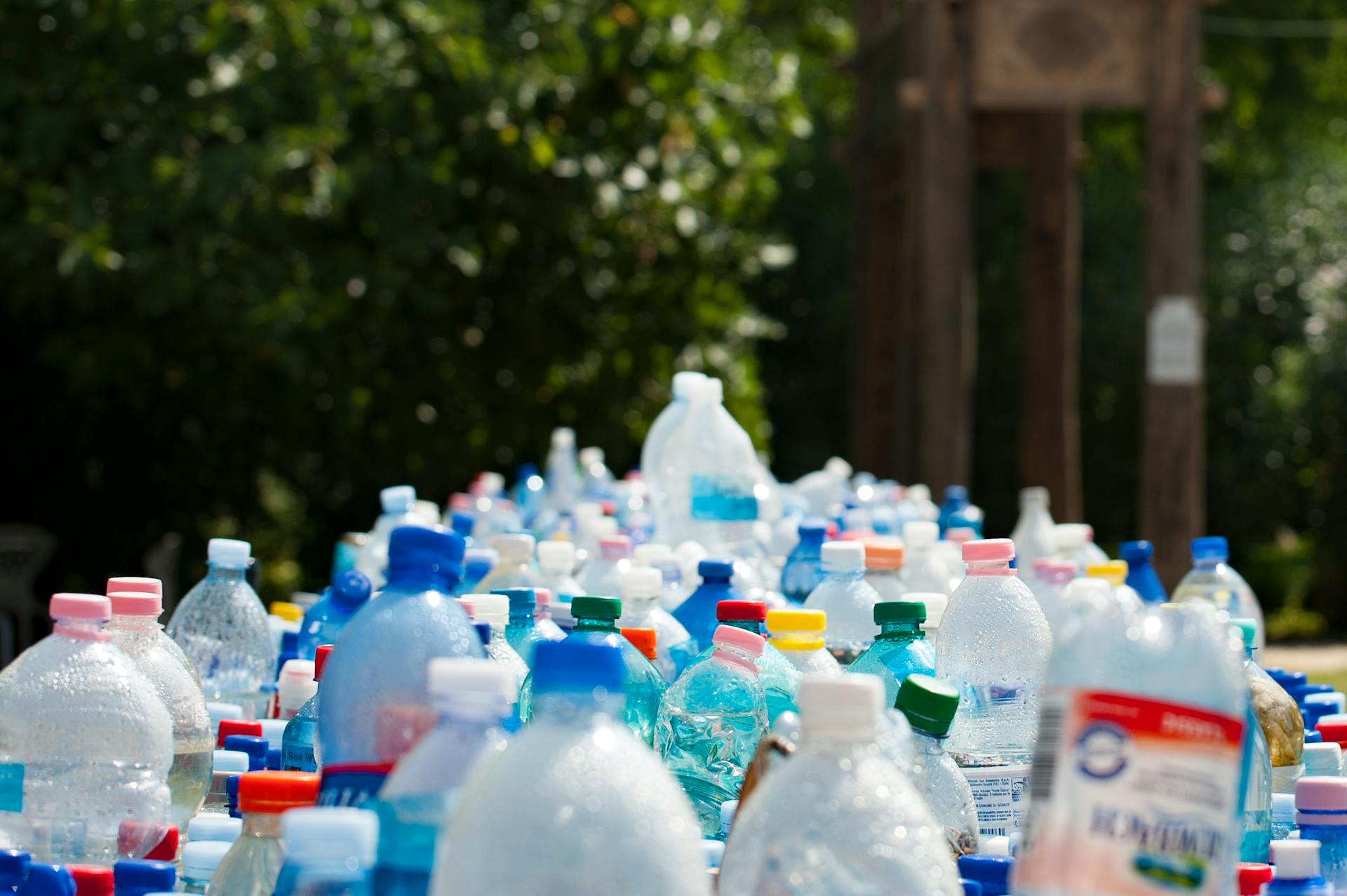Environmental Pollution Prevention Law & Policies
A privilege to introduce a write up from one of the top law colleges of LL.B degree course, MIES R M Law College, Kolkata. An informative article on this Environmental Pollution Prevention Law is been written by on the top faculty of this Topmost law college. Moreover, Ms. Mahejabin Khatun. had brilliantly described in this article about Environmental Pollution Prevention Law & Policies. MIES R M Law College (Law Education) is one of the Best private law colleges in West Bengal. Situated at Sonarpur, South Kolkata
Environmental pollution or simply pollution refers to undesirable changes occurring in the physical, chemical, and biological composition of the natural environment consisting of air, water, and soil. Pollution also means the presence of harmful pollutants in an environment that makes this environment unhealthy to live in. Moreover, undesirable change in physical, chemical and biological characteristics of water, air, and soil that may harmfully affect human, animal and plant life, industrial progress, living conditions and cultural assets (Taj Mahal) .
An unfavorable alteration for Environmental Pollution Prevention Law
Pollution is also viewed as ‘an unfavorable alteration’ in the sustaining and carrying capacity of the natural environment wholly or largely by the byproducts of human activities. The natural environment has an inbuilt capacity to replenish the losses or reduction in its constituents to restore it as sustainable and healthy as required.
The ever-expanding population and evolution of man into modern times have led to rapid urbanization, industrialization. And moreover, an unprecedented rise in human habitations. All these human endeavors have in turn virtually perpetuated deforestation, loss of habitats for flora and fauna, depletion of natural resources at a large scale over the last couple of centuries which have told upon the inherent resilience of the natural environment. As a result, the natural environment continues to be undesirably polluted.
Pollutants :
A pollutant is defined as any form of energy or matter or action that causes imbalance or disequilibrium in the required composition of natural objects such as air, water, etc. A pollutant creates damage by interfering directly or indirectly with the biogeochemical process of an organism.
Pollutants may be :
Natural Pollutants − Natural pollutants are caused by natural forces such as volcanic eruption and forest fire.
Man-made Pollutants − These refer to the release of excess amount of gases or matter by human activities. For instance, increase in the number of automobiles adds excess carbon monoxide to the atmosphere causing harmful effect on vegetation and human health.
Classification of Pollution
Different types of pollution are classified based on the part of the environment which they affect or result caused by particular pollution. Each type of pollution has its own distinctive cause and consequences.
The major types of pollution are as follows.
- Air pollution
- Water pollution
- Noise pollution
- Soil or land pollution
Every day, every moment, we breathe polluted air. And moreover, may become a victim of air pollution. It is obvious that the quantum of pollutants that enter our body through respiration would be manifold in comparison to those taken in through polluted water or contaminated food.
Air pollution
Air Pollution is one of the most widespread forms of pollution all over the world. Since the wind is the main agent of air pollution. It gathers and moves pollutants from one area to another, sometimes reducing the concentration of pollutants in one location, while increasing it in another.
Causes of Air Pollution :
Apart from the natural causes of pollutants, as stated above, human interaction and resource utilization is perhaps adding more pollutants to the atmosphere.
- Industrialization − Industries big or small requires steam to run. The steam is produced by burning fossil fuels such as coal, coke, and furnace oil. These fuels while burning release toxic gases in large amounts into the atmosphere.
- Automobiles − To meet the demands of the exploding human population, the number of automobiles is increasing in a great space. Automobile exhausts are responsible for about sixty percent of air pollution. Released carbon monoxide from the automobiles pollutes the air and harms trees and other natural vegetation. It also has ill-effects on human health.
- Chlorofluorocarbons − Scientists are now alarmed regarding the increased concentration of chemical substances together called chlorofluorocarbon in the atmosphere. These substances are responsible for creating holes in the ozone layer causing an unwanted imbalance in the heat budget. These are produced by modern gadgets such as air conditioners, refrigerators, dyers, etc.
Adverse effects of air pollution
The adverse effects of air pollution appear in the form of poor quality of air, acidic precipitation (rain, snow, and hail), and deposition. And moreover, other health hazards.
The main pollutants of air are carbon dioxide (CO2 ), carbonic acid (H 2SO2), water (H2O), nitric acid (HNO3O ) and sulphuric acid (H2SO4 ).
Air pollution has harmful effects on natural vegetation and human health such as respiratory illnesses. Acidic precipitation is highly fatal for aquatic flora and fauna, monuments and also for natural vegetation.NO3O ), and sulphuric acid (H2SO4 ).
Air Pollution Control :
Air pollution control is an onerous task as there are large number of pollutants involved in air pollution. Some of these are even difficult to detect. However, there can be some basic approaches to control air pollution. They are as follows.
Preventive Approach
It is well said that prevention is better than cure. We can prevent pollutants of air from being produced by various ways. For instance, by changing raw materials used in industry or the ingredient of fuel from conventional to non-conventional sources of energy. Even by the maintenance of vehicles and roads and an efficient transport system. Moreover, by a reduction in garbage burning and shifting cultivation areas; afforestation, etc.
Dispersal Approach
We can prevent air pollution by raising the heights of smokestacks in industries so as to release the pollutants high into the atmosphere.
Collection Approach
Air pollution can be controlled by designing the equipment and machinery to trap pollutants before they escape into the atmosphere. To meet the standards, automobile engines have been re-designed and new cars have been equipped with devices such as the catalytic converter, which changes the pollutants into harmless substances. Because of these new devices, air pollution from car exhaust has also been reduced.
Air pollution has harmful effects on natural vegetation and human health such as respiratory illnesses. Acidic precipitation is highly fatal for aquatic flora and fauna, monuments and also for natural vegetation.
Legislation Approach
There have been many initiatives in different countries for making laws, setting standards, and norms to check air pollution and ensure quality air. Moreover, all the highly industrialized countries of the world have certain legislations to prevent and control air pollution. As pollutants of air are carried by the wind from one country to another for thousands of miles, there should be global initiatives agreed upon by all countries to save the earth from the menace of air pollution.
Water pollution
Water Pollution may be defined as an alteration in the physical, chemical, and biological characteristics of water. Therefore, which may cause harmful effects on human and aquatic life.
Pollutants of Water
Following are some of the reasons for water pollution.
- Disposal of sewage and sludge into water bodies such as rivers, streams, and lakes.
- Inorganic compounds and minerals by mining and industrial activities.
- Use of chemical fertilizers for agricultural purposes.
- Synthetic organic compounds from industrial, agricultural, and domestic garbage.
- Oil and petroleum from tankers’ accidents, offshore drilling, combustion engine, etc.
- Radioactive wastes.
Water Pollution Control
- Environmental Education − Individuals and the masses should be educated about the significance of the quality of water. And moreover, its impact on the economy, society, and ecology.
- Sewage Treatment − The household water should be treated properly to make it environmentally safe. Therefore, necessary steps should be taken to ensure that an effective sewage treatment process is put in place. And moreover, contaminated water doesn’t get mixed with the freshwater bodies.
- Accountability of Industrial Units − The industrial setups should make provisions for the treatment of waste materials and water and for its safe drainage.
- Afforestation − Planting trees can reduce water pollution to a large extent as they check surface soil runoff by running water.
- Soil Conservation − Soil conservation adds many inorganic substances to the surface and underground water. Soil conservation is, therefore, a useful technique to reduce water pollution.
- Reduced Use of Chemical Fertilizers − Chemical fertilizers add nitrates to water bodies. The use of compost manures can help reduce the problem of eutrophication in the water bodies.
- Financial Support − Governments should make provisions for adequate funds to the civic bodies for water pollution control.
Legislation and Implementation of Stringent Environmental Laws
The need of the hour is that the government should legislate and implement strict environmental laws for the protection of water bodies, treatment of wastewater, etc. Moreover, the violators of such laws should be given exemplary punishment.
Noise pollution :
Noise pollution refers to any unwanted and unpleasant sound that brings discomfort and restlessness to human beings. Like air and water pollution, noise pollution is harmful to human and animal life. Noise pollution is also an important environmental hazard, which is becoming growingly injurious in many parts of the world. Noise beyond a particular level or decibel (unit of noise) tends to become a health and environmental hazard.
Sources of Noise Pollution
- Household appliances such as grinders, electric motor, washing machines
- Social gatherings such as marriages and other social parties
- Places of worship
- Commercial activities
- Construction activities
- Industrial activities
- Automobiles and transport system
- Power generators
- Agricultural equipment
Noise Pollution Control
According to the World Health Organization (WHO), of all the environmental pollution. Noise is the easiest to control.
Noise pollution can be checked at home by −
- Turning off sound-making appliances when they are not in use.
- Shutting the door when noisy machines are being used.
- Lowering the volume of appliances such as television to a desirable level.
- Using earplugs while listening to music.
At mass level it can be checked by −
- By planting trees in large numbers to create vegetation buffer zones, which absorb noise.
- Public awareness about the need for control of noise pollution.
- Application of engineering control techniques such as alteration and modification of design to reduce noise from equipment and machinery and by the construction of sound barriers or the use of sound absorbers in industrial and factory sites can reduce exposure to noise to a great extent.
- Construction of institutions and hospitals away from airports, railways, and highways.
- Improved building design may also reduce the impact of noise pollution.
- Stringent legislation at central and state levels to check air pollution at workplaces, urban centers, etc.
Soil pollution :
Soil pollution refers to an undesirable decrease in the quality of soil, either by man-induced sources or natural sources or by both.
Moreover, Soil is vital not only for the growth of plants and growing food. But also cultivating raw materials for agro-based industries. Therefore, healthy soil is a significant prerequisite for human survival.
Causes of Soil Erosion
- Deforestation at a large scale
- Over-grazing
- Mining
- The decrease in soil microorganisms
- Excessive use of chemical fertilizers
- Excessive use of irrigation
- Lack of humus content
- Improper and unscientific rotation of crops
Soil pollution leads to many harmful consequences such as decrease in agricultural production; reduced nitrogen fixation; reduction in biodiversity; silting of tanks, lakes and reservoirs; diseases and deaths of consumers in the food chain due to use of chemical fertilizers and pesticides, etc.
Soil Pollution Control
- Adoption of soil-friendly agricultural practices.
- Use of compost manures in place of chemical fertilizers; Use of bio-fertilizers and natural pesticides help in minimizing the usage of chemical fertilizers and pesticides
- Scientific notation of crop to increase soil fertility.
- Proper disposal of industrial and urban solid and liquid wastes.
- Planting of trees to check soil erosion in slopes and mountainous regions.
- Controlled grazing.
- Reduction in the heaps of garbage and refuse.
- The principles of three R’s − Recycle, Reuse, and Reduce − help in minimizing the generation of solid waste.
- Formulation and effective implementation of stringent pollution control legislation
- Moreover, improved sewage and sanitation systems in urban areas.
Environmental Protection Acts in India in respect to Environmental Pollution Prevention Law
In the Constitution of India, it is clearly stated that it is the duty of the state to ‘protect and improve the environment and to safeguard the forests and wildlife of the country’. It imposes a duty on every citizen ‘to protect and improve the natural environment including forests, lakes, rivers and wildlife’.
There are a number of environmental acts enacted in India. Some of the important legislations in this respect are −
- Wildlife Protection Act, 1972
- Forest (Conservation) Act, 1980
- Water (Prevention and Control of Pollution) Act, 1974
- The Air (Prevention and Control of Pollution) Act, 1981
- Environmental Protection Act, 1986
- Handling and Management of Hazardous Waste Rules, 1989
- The National Environmental Tribunal Act, 1995
- The Biological Diversity Act, 2002
Environmental Protection Act, 1986
Environmental Protection Act, 1986, was a statutory response that came into effect a year after the tragic Bhopal Gas Tragedy and is considered umbrella legislation as it addresses many loopholes in the existing environmental laws. It was enacted as per the spirit of the Stockholm Conference held in June 1972 to take suitable measures for the protection and reinvigoration of the environment and related matters.
The Environment (Protection) Act is applicable to whole of India including Jammu & Kashmir. It came into force on November 19, 1986. EPA 1986 was enacted largely to implement the decisions made at the UN Conference on Human Environment held at Stockholm in June, 1972.
It was to co-ordinate the activities of the various regulatory agencies under the existing laws. It also seeks collection and dissemination of information on environmental pollution.
The Conclusion of Environmental Pollution Prevention Law
A lot have been done to protect and improve the environment world over. However much remains to be done for building a sustainable society. New mechanisms are being put in place to expedite the process of protecting and improving the environment. For example, new institutions — the National Environment Management Authority (NEMA) and the State Environment Management Authorities (SEMA) — in India have been proposed as full-time technical organizations with the capacity to process all environmental clearance applications in a time-bound manner.






Wonderful, what a website it is! This webpage presents valuable information to us, keep it up. Sandie Gene Minica
Some genuinely nice and useful information on this web site, too I conceive the pattern has got wonderful features. Blanche Bert Scales
Greetings, I do believe your blog might be having internet browser compatibility issues. Whenever I take a look at your blog in Safari, it looks fine however, if opening in IE, it has some overlapping issues. I simply wanted to give you a quick heads up! Aside from that, great site! Dreddy Paquito Fontana